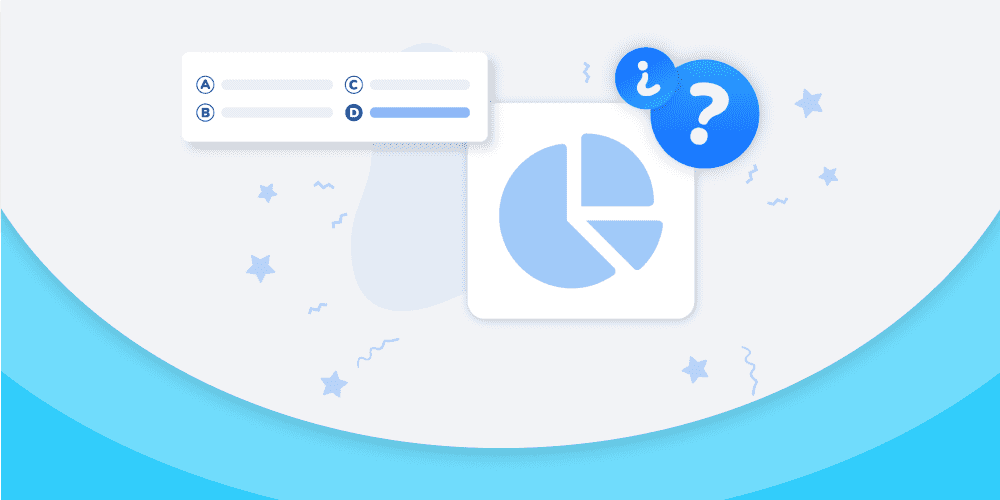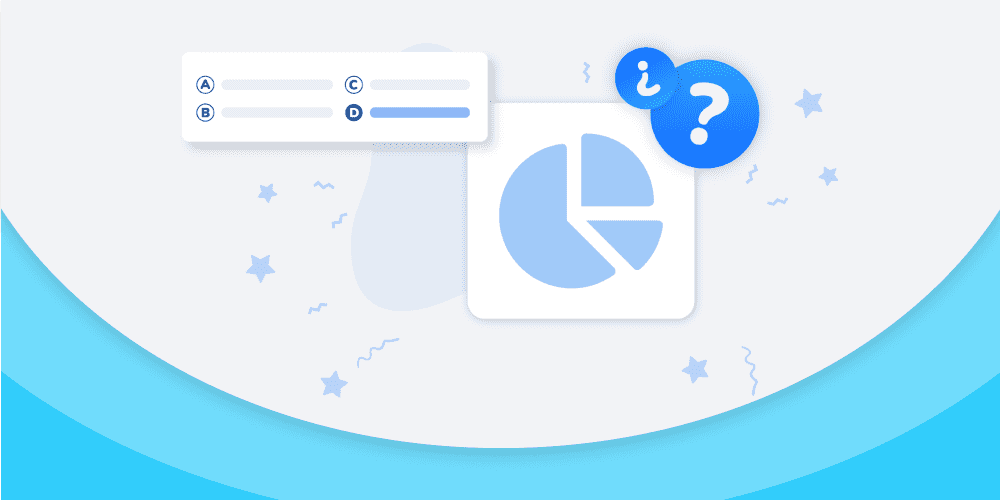How to build your remote course with Wooclap
04.05.2020 • 3 minutes
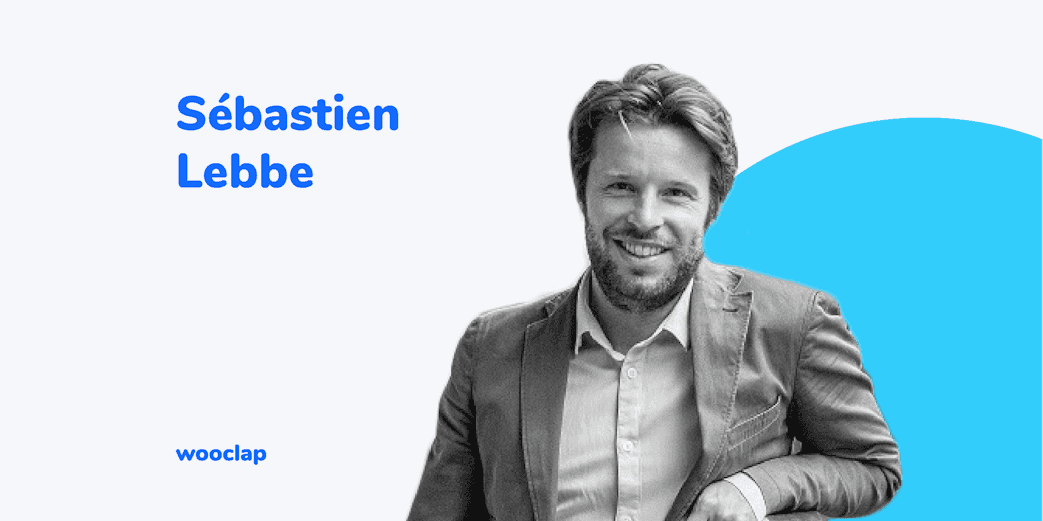
Engaging Students in Remote Learning: Insights from Wooclap’s CEO
To involve students and turn them into actors of their learning, Wooclap co-founder and CEO Sébastien Lebbe shares how he built his remote course for the Solvay Business School in Brussels.
What to remember from the course organisation?
- Term: 2h
- How: remote and live
- Videoconferencing tool: Zoom
- Interaction tool: Wooclap
- Number of students: 60
- Themes: Neurosciences + SaaS Business model
- Content: 15 questions prepared on Wooclap in advance and integrated in a powerpoint presentation with 2 quick questions
- Questions from students: asked on the Wall of Messages and answered orally during the presentation
Before the course
« I started the presentation with a World Cloud to break the ice: “How are you feeling during this period of confinement?” The point of this type of question is to relax the atmosphere and promote sharing in the group, then introduce the course more naturally. In this Word Cloud, you can see that the main 3 most recurring answers were: Necessary, Annoying, and Long.
Before starting the course, it seems important to me to ask knowledge-based questions because learning is based on acquired knowledge. Before each part of the course, I either did a survey or asked a multiple choice question or a Find on Image to find out if my audience already possessed certain knowledge, or if they had heard of the concept I was going to talk about. »
Nuage de mots
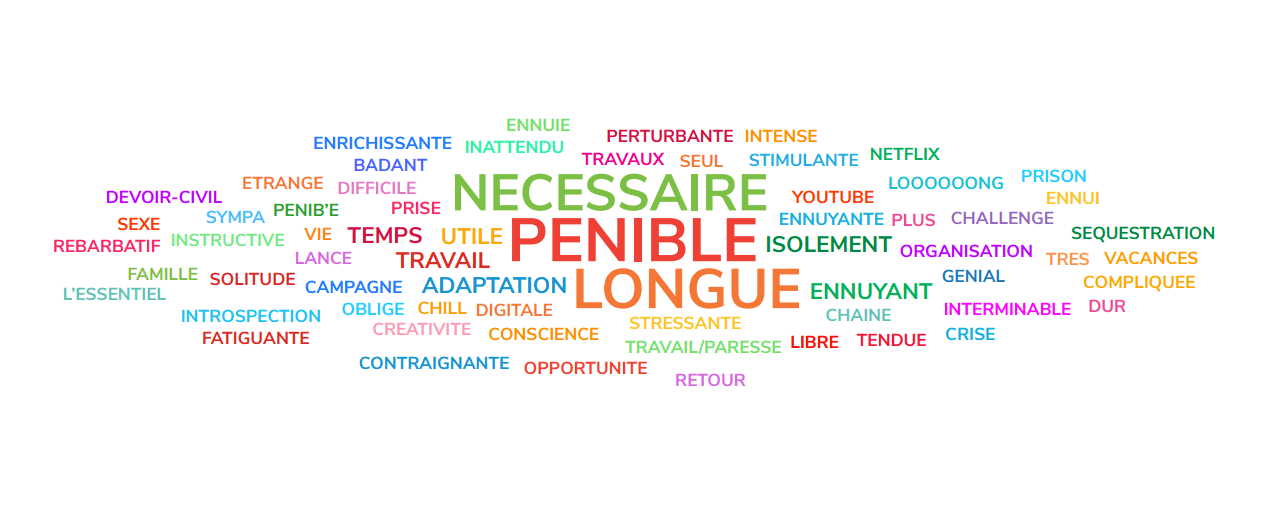
During the course
« During one part, I asked an open question in which I asked students to name the 3 learning methods presented during the course. The objective was to see if they had understood the challenges and to practice memory recovery. This method, promoted by Steve Masson, who is a professor and director of the neuroscience research laboratory at Montreal’s University of Quebec, aims to activate our brain by trying to remember the information rather than listening passively.
I then asked a Find a number-question for which there was a simple enough reasoning, but which was important to understand for the rest of the presentation. It’s important to draw the students’ attention at the right time so that the basics are well understood. »
At the end of each part and of the course
« Before closing a part and to make sure the students understood its important concepts well, I also asked questions to test their knowledge.
After more complex parts, to ask them explicitly if they understood, I did 2 surveys (Did you understand the concept? “Yes”, “Moderately”, “No”). For one of the surveys, 30% had moderately understood. In this case, 70% answered “Yes, it’s clear” and 30% answered “Moderately”
So I created an open quick question and I asked them to tell me what they did not understand in this part. Their reply: the section on cohorts. As a result, I was able to go back a few slides, to give them further explanations and try to clarify these concepts. »
Résultat des votes Wooclap
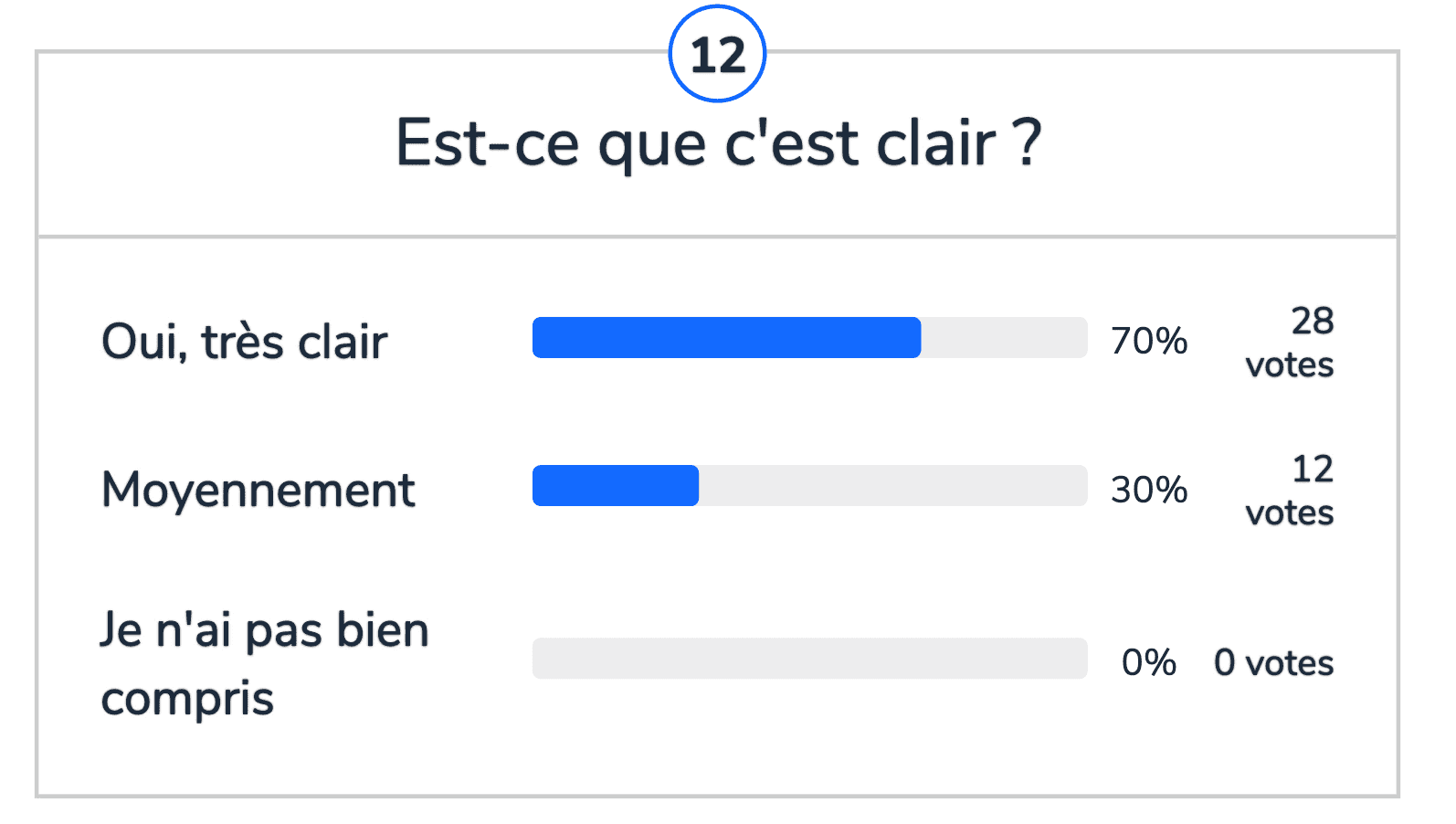
Distance learning with Wooclap
Discover all our resources on distance learning with Wooclap
Writer

Julie Lemaire
Content Marketing Lead @Wooclap. As a student of language with a passion for education and a thirst for knowledge, I am currently learning to parlare italiano.
A monthly summary of our product updates and our latest published content, directly in your inbox.

